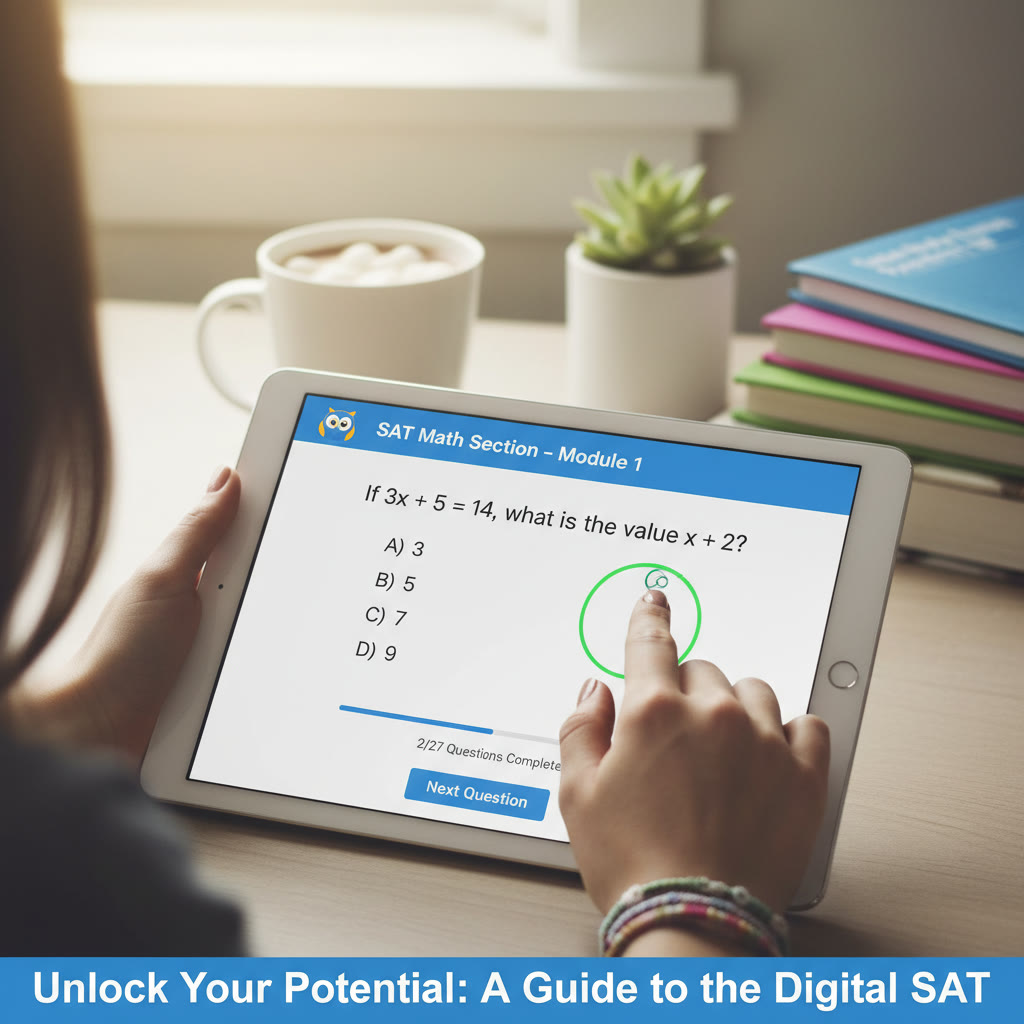Introduction: Why the SAT still matters for Vanderbilt — and how to approach it
Talking about Vanderbilt is talking about one of the most selective universities in the country. For families navigating the college application process, the SAT can feel like both a gatekeeper and an opportunity. Vanderbilt’s admissions landscape is competitive, and while policy nuances (such as test-optional periods) have shifted in recent years, a strong SAT—especially in the Digital SAT era—remains an important credential that can strengthen your candidacy, open scholarship doors, and give schools a comparable academic metric across applicants.

Where Vanderbilt stands today: test policy and what it means for you
Vanderbilt has spent the last several admission cycles balancing a desire to holistically review applicants with the practical benefits of standardized scores. In simple terms, Vanderbilt considers SAT scores if you submit them — they are “considered if submitted” rather than strictly required. That wording means submitting strong SAT results can help, but omitting scores will not automatically disqualify you. The important takeaway is this: if your SAT score strengthens your profile, submit it. If your score doesn’t reflect your academic ability and you have stronger evidence elsewhere (GPA, coursework, teacher recommendations, extracurricular achievements), you may choose to apply without it.
How to decide whether to submit SAT scores
- Submit if your score is within or above Vanderbilt’s middle 50% reported range (aim high — competitive applicants typically fall in the top end of national percentiles).
- Consider submitting if the score supports scholarship applications or program-specific requirements (some internal scholarships or honors programs may use scores as part of their selection).
- Don’t submit if your score is well below your GPA/academic record and you can provide stronger evidence of academic readiness through other parts of your application.
- Use Superscoring (if applicable) and recent improvements — Vanderbilt and many selective schools typically review the best sections across multiple administrations, so retaking can be strategic.
Target scores: interpreting Vanderbilt’s score ranges
When counselors and students talk about target SAT scores for Vanderbilt, they’re usually looking at the middle 50% range of admitted students. Think of that range as a realistic benchmark: if your total score sits in the middle 50%, you’re in the match zone academically; above that puts you in a stronger position; below it means the school is likely to consider you a reach — though not automatically impossible, if your application shines in other ways.
| Metric | Competitive Target | Why it matters |
|---|---|---|
| Total Digital SAT (scaled) | 1510–1560 (aim: 1530+) | Falls near Vanderbilt’s reported middle 50% and signals strong academic readiness. |
| Evidence-based Reading & Writing (ERW) | 760–780+ | High ERW supports humanities and interdisciplinary applicants; also important for selective writing-based scholarships. |
| Math | 750–780+ | Strong math demonstrates quantitative readiness—valuable for engineering, economics, computer science, and research-focused applicants. |
Remember: a score right at the lower edge of the range doesn’t guarantee admission — every part of the application matters. But scores in or above the indicated target improve your statistical standing in a pool where small differences can matter.
Digital SAT specifics: what’s different and how to prepare
The SAT has been evolving into a digital format. Beyond the device change, the Digital SAT focuses on adaptive sectioning, greater question variety, and a slightly different pacing rhythm. For Vanderbilt hopefuls, that means preparation should be format-aware — not just content-aware.
Practical Digital SAT tips
- Practice on a device: get comfortable with the interface, timing, and on-screen calculators (when permitted).
- Work on adaptive strategy: the test adapts as you move through sections, so focus on maintaining accuracy early in each module to earn more favorable question sets.
- Time management: the digital format often has shorter, module-based time periods; use timed practice blocks to simulate the real rhythm.
- Review question types: digital SAT may include different interactive styles — practice with official digital practice materials to eliminate surprises.

Putting your SAT in the context of Vanderbilt’s holistic review
Vanderbilt reads applications holistically. That means SAT numbers are interpreted alongside GPA rigor, course selection, teacher recommendations, essays, extracurricular impact, leadership, and personal context. A high SAT may amplify a strong academic record; a lower SAT can be buffered by standout experiences or compelling essays. Admissions officers look for consistency: do your scores, transcript, and activities tell a coherent story about who you are and what you’ll bring to campus?
Elements that pair well with strong SATs
- Rigorous coursework (AP, IB, or honors classes) with strong grades.
- Research, internships, or sustained creative work that connect to your intended major.
- Clear, reflective essays that link academic curiosity to real experiences.
- Teacher recommendations that offer specific insight (not generic praise).
Example student scenarios: how SAT choices affect application strategy
Concrete examples often help clarify decisions. Below are three fictional but realistic applicants and how their SAT strategy might differ.
Scenario A: The Strong Academic Profile
Jasmine has a 3.95 GPA in a full AP course load, leads a research lab internship, and scored 1540 on the Digital SAT. Because her SAT sits squarely in Vanderbilt’s competitive range, she submits it. The score complements her transcript and signals that her academic excellence is consistent across settings.
Scenario B: The Creative Leader
Liam has a 3.85 GPA, is a nationally recognized composer, and earned a 1380 SAT. His application’s creative portfolio and compelling essays are his strengths. He may choose not to submit his SAT if he believes the score will distract from his narrative; alternatively, he might submit if he’s applying to programs where quantitative evidence is helpful. Either route can be defensible if the rest of his application is strong.
Scenario C: The Upward Trajectory
Priya had a rocky start academically but finished high school with an upward trend, strong coursework junior and senior year, compelling teacher recommendations, and a 1470 SAT. Submitting the SAT helps her demonstrate current readiness; the score, paired with the upward trend, can underline a positive trajectory in her academic story.
How admissions officers interpret scores and subject strengths
Admissions committees often look beyond the total score. They scan section-level strengths to understand where an applicant excels. For example, a student with an outstanding Math section may be a better fit for quantitative majors, while a stellar ERW signals excellent reading and writing skills — useful across humanities and social sciences. If your profile aligns to a particular major or program at Vanderbilt, emphasize that match in essays and any optional subject-related supplements.
Practical testing timeline for Vanderbilt applicants
Creating a sensible timeline reduces stress and increases your chances of arriving at test day ready. Here’s a sample schedule for students applying in the regular cycle (January 1 deadline) and early decision (November 1 deadline).
| Application Cycle | Recommended Latest Test Date to Receive Scores in Time | Why |
|---|---|---|
| Early Decision (Nov 1) | August–September (prior year) | Allows time for retakes and score reporting before application deadline. |
| Regular Decision (Jan 1) | October–November | Gives buffer for late scores, possible retake, and finalizing application materials. |
Always check deadlines and score-reporting timelines for the specific year you apply; plan at least one retake opportunity if you are not satisfied with your initial results.
Study strategies that move the needle
High-yield study is not the same as long hours. Targeted practice, official practice tests, and expert feedback are what produce steady improvements. Below are approaches that consistently help students raise their Digital SAT scores.
Short-term, high-impact tactics
- Take official full-length practice tests under timed conditions to build endurance and to identify weak areas.
- Analyze errors thoroughly — not just how many you missed, but why you missed them (content gap, misreading, timing pressure, careless mistake).
- Use focused drills for your weakest question types rather than general review.
- Simulate test conditions on the digital interface so device familiarity is not a disadvantage.
Longer-term preparation paths
- Build conceptual mastery in math and evidence-based reading and writing rather than memorizing tricks.
- Integrate reading widely — literary and informational texts — to develop synthesis and inference skills.
- Work with a tutor for accountability and tailored feedback. Personalized programs (for example, Sparkl’s 1-on-1 guidance and tailored study plans) often speed progress because they zero in on your unique gaps and learning style.
How personalized tutoring (and Sparkl) can fit naturally into your plan
Not every student needs private tutoring, but for many competitive applicants, personalized instruction is the catalyst that turns potential into results. Quality 1-on-1 tutoring provides immediate feedback, customized drills, and strategies that align with the Digital SAT’s format. Personalized plans reduce wasted effort and help you practice smarter — and faster.
Sparkl’s model, for example, emphasizes expert tutors who craft individualized study plans, offer targeted feedback, and use AI-driven insights to track progress. That combination helps students focus on the questions and skills that matter most for improving scores and can also help with time management and test-day mindset—two intangible but critical components.
Essays, recommendations, and extracurriculars: rounding out the application
While SAT scores provide a quantitative snapshot, Vanderbilt’s holistic review means essays and recommendations carry enormous weight. Use your essays to show intellectual curiosity, resilience, and the personal experiences that shaped your academic interests. Strong teacher recommendations tell admissions officers what you are like in the classroom — your work ethic, curiosity, and potential to contribute.
Tips for essays and supplements
- Be specific: admissions readers respond to concrete details and reflective insight.
- Show growth: describe not just what happened, but what you learned and how you changed.
- Connect to Vanderbilt: explain why Vanderbilt’s programs, community, or specific faculty align with your goals (avoid generic praise).
- Proofread: flawless grammar and clear structure matter — they’re an easy way to demonstrate seriousness.
Financial aid and testing — what scores might influence
Test scores can be part of scholarship considerations at many universities. While Vanderbilt’s financial aid policies center on demonstrated need rather than merit-based award lists, strong SAT performance can sometimes factor into eligibility for certain competitive scholarships, honors programs, or externally administered awards. If scholarships are part of your strategy, submitting your best score is often advantageous.
Final checklist for SAT and Vanderbilt applicants
- Decide whether to submit SAT scores based on how well they represent your academic profile.
- Plan testing dates with retake opportunities before application deadlines.
- Practice with official digital SAT materials and simulate test-day conditions.
- Use targeted study plans — consider 1-on-1 tutoring if you need structured, personalized improvement (Sparkl-style programs can be particularly effective).
- Complement scores with strong essays, recommendations, and evidence of sustained intellectual engagement.
- Review all application requirements and deadlines; double-check that score reports are sent and received in time.
Common questions families ask (and short answers)
Q: Is Vanderbilt test-optional forever?
A: Admissions policies change. Vanderbilt has used a considered approach to test submission in recent cycles — many students choose to submit scores, but policies evolve. Check the admissions website for the latest guidance during your application cycle, and use the decision framework above to decide whether to send scores.
Q: How many times should I take the Digital SAT?
A: There’s no magic number. Many students take it twice—once to establish a baseline and once after targeted study. If your score improves, consider a third attempt only if you can meaningfully increase your sections without introducing burnout or interfering with school commitments.
Q: Will a perfect SAT guarantee admission?
A: No. Vanderbilt’s admissions are holistic. A top score is a powerful asset, but it won’t override weak grades, a lackluster application narrative, or insufficient academic rigor. Think of the SAT as one part of a mosaic.
Conclusion: Build a plan that reflects you
Navigating Vanderbilt’s SAT expectations is a blend of strategy and self-knowledge. Know the target ranges, understand how scores fit into a holistic review, and prepare in a way that addresses your personal strengths and weaknesses. Whether you choose to study independently, join group classes, or invest in personalized tutoring, aim for consistent, targeted practice and clear storytelling in the rest of your application.
If a tailored approach sounds appealing, consider the benefits of expert, 1-on-1 guidance: focused strategies, a study plan built around your calendar, and AI-driven insights that track progress efficiently — tools that can make the path to Vanderbilt clearer and less stressful. Above all, remember that an application is not a single number. It’s a narrative about your achievements, your curiosity, and what you’ll bring to a campus community. Craft that narrative with care, and let your SAT be one clear, honest piece of it.

Good luck. With thoughtful preparation, a balanced plan, and confident presentation, you’ll maximize your chance to make an impression at Vanderbilt and other top colleges.














No Comments
Leave a comment Cancel